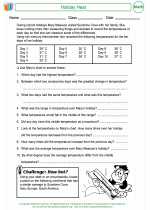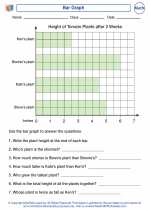Probability
Probability is a branch of mathematics that deals with the likelihood of a particular event or outcome occurring. It is used to quantify uncertainty and measure the likelihood of various outcomes.
Basic Concepts
- Sample Space: The set of all possible outcomes of an experiment. For example, when rolling a six-sided die, the sample space is {1, 2, 3, 4, 5, 6}.
- Event: A subset of the sample space. An event can consist of a single outcome or multiple outcomes. For example, getting a 3 when rolling a six-sided die is an event.
- Probability of an Event: The likelihood of an event occurring, often denoted by P(event). It is a number between 0 and 1, where 0 indicates impossibility and 1 indicates certainty.
Calculating Probability
The probability of an event can be calculated using the following formula:
P(event) = Number of favorable outcomes / Total number of outcomes
Types of Probability
There are different types of probability, including:
- Classical Probability: Based on equally likely outcomes. For example, the probability of rolling a 3 on a fair six-sided die is 1/6.
- Empirical Probability: Based on observed data. For example, the probability of a team winning a game based on its past performance.
- Conditional Probability: The probability of an event occurring given that another event has already occurred. It is denoted by P(A|B), where A and B are events.
- Complementary Probability: The probability of an event not occurring. It is calculated as 1 minus the probability of the event occurring.
Study Guide
To study probability effectively, consider the following tips:
- Understand the basic concepts of sample space, event, and probability.
- Practice calculating probabilities using the formula Number of favorable outcomes / Total number of outcomes.
- Learn about the different types of probability and how they are applied in real-world scenarios.
- Work on solving probability problems and applying the concepts to various situations.
- Review and understand conditional probability and complementary probability.
By mastering the concepts and calculations of probability, you will be better equipped to analyze and make decisions based on uncertain outcomes.
[Probability] Related Worksheets and Study Guides:
.◂Math Worksheets and Study Guides Fourth Grade. Data Analysis
Study Guide Data Analysis
Data Analysis  Activity Lesson
Activity Lesson Interpreting Graphs
Interpreting Graphs  Activity Lesson
Activity Lesson Frequent Flyer
Frequent Flyer  Activity Lesson
Activity Lesson Holiday Heat
Holiday Heat  Activity Lesson
Activity Lesson Story Time
Story Time  Activity Lesson
Activity Lesson Farmer Frank's Fruit
Farmer Frank's Fruit  Worksheet/Answer key
Worksheet/Answer key Data Analysis
Data Analysis  Worksheet/Answer key
Worksheet/Answer key Data Analysis
Data Analysis  Worksheet/Answer key
Worksheet/Answer key Data Analysis
Data Analysis  Worksheet/Answer key
Worksheet/Answer key Data Analysis
Data Analysis  Worksheet/Answer key
Worksheet/Answer key Bar Graph
Bar Graph  Vocabulary/Answer key
Vocabulary/Answer key Data Analysis
Data Analysis 

 Activity Lesson
Activity Lesson
 Activity Lesson
Activity Lesson
 Activity Lesson
Activity Lesson
 Activity Lesson
Activity Lesson
 Activity Lesson
Activity Lesson
 Worksheet/Answer key
Worksheet/Answer key
 Worksheet/Answer key
Worksheet/Answer key
 Worksheet/Answer key
Worksheet/Answer key
 Worksheet/Answer key
Worksheet/Answer key
 Worksheet/Answer key
Worksheet/Answer key
 Vocabulary/Answer key
Vocabulary/Answer key

The resources above cover the following skills:
Data Analysis and Probability (NCTM)
Select and use appropriate statistical methods to analyze data.
Use measures of center, focusing on the median, and understand what each does and does not indicate about the data set.